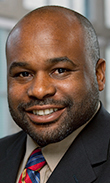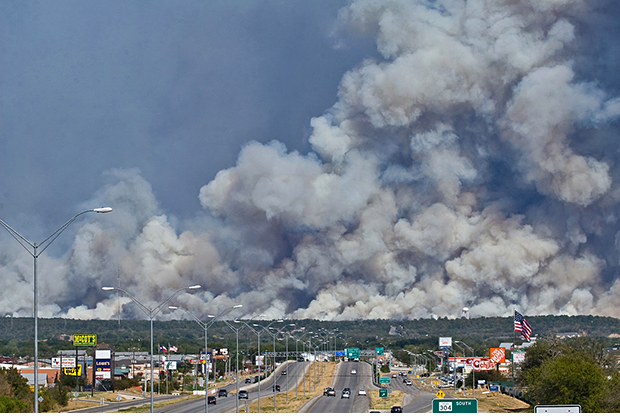HRRC identifying best practices in long-term disaster recoveries

Michelle Meyer

John Cooper
A research team from Texas A&M’s [Hazard Reduction and Recovery Center] (http://hrrc.arch.tamu.edu/) is working to identify best practices in pre- and post-disaster planning in communities recovering from a variety of natural and man-made disasters.
Supported by a two-year, $221,076 [grant] (http://www.nsf.gov/awardsearch/showAward?AWD_ID=1463847) from the National Science Foundation, the team is compiling and analyzing practices and interactions of public and private agencies involved in disaster recovery in six Texas communities that have experienced a hurricane, tornado, wildfire or industrial facility explosion.
The effort is led by co-principal investigators Michelle Meyer, assistant research scientist at the HRRC and assistant professor of sociology at Louisiana State University, and John Cooper, an HRRC research fellow and [urban planning] (http://laup.arch.tamu.edu/) associate professor of practice at Texas A&M.
After a disaster strikes, what often follows is an unequal and partial recovery, the result of recovery efforts that fail to reduce pre-disaster vulnerabilities, said Meyer in the project abstract.
“Future disasters mean more communities will struggle, often with little local experience managing the difficult processes of achieving sustainable, resilient recovery,” she added.
For this study, researchers are interviewing the people leading recovery efforts in the six communities, observing committee and community meetings, documenting events and analyzing community reconstruction and rehabilitation.
The targeted communities are Granbury, hit by a [tornado] (http://www.huffingtonpost.com/2013/05/16/granbury-texas-tornado-2013_n_3285040.html) in 2013; West, the scene of a massive fertilizer plant [explosion] (http://res.dallasnews.com/West/) in 2013; Marion County, ravaged by the 2011 [Bear Creek Fire] (http://www.ksla.com/story/15405830/more-evacuations-ordered-in-bear-creek-fire) , the largest wildfire in East Texas history; Bastrop County, where [wildfires] (http://www.chron.com/news/article/Bastrop-wildfires-destroy-1-000-plus-homes-2157848.php) claimed more than 1,000 homes in 2011; Galveston, which was hit hard by [Hurricane Ike] (http://www.texastribune.org/2013/04/26/galveston-still-healing-5-years-after-hurricane-ik/) in 2008; and Brownsville, which was savaged by [Hurricane Dolly] (http://www.nytimes.com/2008/07/24/us/24hurricane.html?_r=1&) that same year.
The HRRC researchers will compare and contrast the practices used in the different communities and develop a model of disaster recovery organizational networks.
The study’s results, said Meyer, will support local public and private organizations’ efforts to develop plans that will speed disaster recovery.
Meyer’s fellow researchers include David Bierling, associate research scientist at the [Texas Transportation Institute] (http://tti.tamu.edu/) and an HRRC research affiliate, Walter Gillis Peacock, Texas A&M professor of urban planning and director of the HRRC, and Shannon Van Zandt, Texas A&M associate professor of urban planning and director of the [Center for Housing and Urban Development] (http://chud.arch.tamu.edu/) .
The research is an extension of a [project] (http://one.arch.tamu.edu/news/2014/4/30/west-granbury-study/) that began in August 2014, when HRRC researchers secured a $40,000 NSF rapid response research grant to study the differences between recoveries from Granbury’s tornado and West’s industrial facility explosion.
Tags
- building a better texas
- chud
- chud gallery
- enviro gallery
- hazard reduction & recovery
- hazards
- housing & urban development
- hrrc
- hrrc gallery
- landscape architecture & urban planning
- laup gallery
- outreach
- partnerships
- planning
- research
- rss
- sustainability
Related Posts

A&M researchers collaborate in U.S. resilience center

College community responds to Harvey

Museum showcases HRRC-developed housing program

HRRC eying how disasters influence food distribution
Follow Us
Facebook Twitter Vimeo Youtube Flickr RSS
Recent Posts

Planning prof heads study of disaster housing aid

A message from the dean

Former student remembered as expert planner

Leading educator named new head of Architecture Dept.






_thumbnail_small.png)
